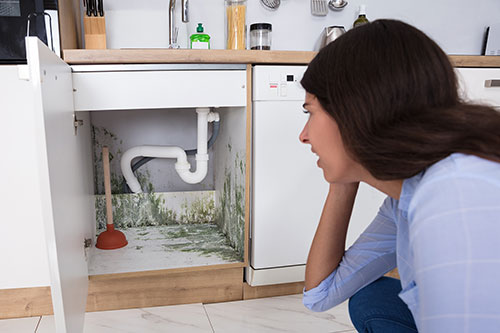
-
When is water and mold damage covered?
Most homeowner and renters policies cover sudden and accidental water damage. Examples would include a burst pipe, toilet overflow, or broken washer hose. If mold develops on a damaged item, it would be covered. Policies usually won’t cover damage from gradual leaks.
-
What type of water and mold damage isn’t covered?
Most home policies don’t cover water damage from gradual leaks or seepage, and that includes damage from mold. Mold from a flood would not be covered because home policies don’t cover floods. You would need a separate flood policy.
-
Adding coverage for mold cleanup
Most home policies don’t include mold cleanup and testing after a damaged item is removed. Your insurance company may let you add coverage for cleanup caused by a covered loss. Your agent can tell you what options are available.
-
If you have a water leak or flooding
Follow these tips to prevent more damage after a water leak or flood:
- Stop the water flow or leak as soon as you can. Know how to turn the water off at the main valve or at the valves under your sinks and near appliances.
- Remove pools of water and start drying the area to prevent more damage and mold growth. Dry the area as soon as you can. Mold can start growing within a day after a leak.
- Move wet items to a dry room or an area with fresh air. If you move items outside, put them somewhere secure to protect them from theft.
- Pull up wet carpets and rugs.
- If you can't remove the water and dry the area yourself, use a service. Search the internet or check a phone book for businesses that specialize in cleaning up after water damage. Your agent also can help you find a service.
-
Filing a claim for water damage
Follow these tips if you have a claim:
- Tell your company as soon as possible. You usually must report water damage that was hidden from view within days after you first see it.
- Make a list of your damaged property. If possible, take pictures or videos of the damage before making any repairs. Don’t throw away any damaged items until your adjuster has seen them.
- Make temporary repairs to protect your house and belongings. For instance, put a tarp on your roof or cover a broken window. Don’t make permanent repairs until your insurance company sees the damage. Keep receipts for any materials you bought to make repairs.
-
Filing a mold claim
If you file a claim for mold removal, here are some tips:
- Make sure the mold professional has a state license.
- You’ll need an inspection to show that mold was removed and that you fixed the problem that caused it.
- Mold professionals must provide a certificate that the mold was removed.


